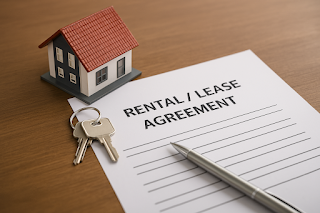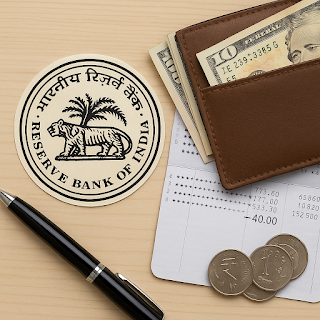Property Knowledge: Get These 2 Important Documents Before Renting a House or Land—Or You Might Regret It Later
Whenever we plan to rent a new house, flat, shop, or land, the first thing that comes to mind is making a proper agreement with the landlord. However, many people are unaware that there are two important legal documents involved in such cases: the Rent Agreement and the Lease Agreement.
While the names sound similar, there is a significant difference between the two. If you sign any of these without understanding the details, you could face legal troubles in the future. In this article, we’ll explain in simple and easy language what a rent and lease agreement is, the difference between them, when each is useful, and what to keep in mind before signing either.
What Are Rent and Lease Agreements?
When you take a property for temporary use, a legal agreement is made between the landlord and the tenant to define the terms and conditions of the stay.
-
Rent Agreement: A legal contract made for a short-term stay, usually up to 11 months or a year.
-
Lease Agreement: A long-term contract that can extend for several years, such as 3, 5, 10 years, or more.
Both agreements are legally binding and help avoid future disputes by clearly defining the rights and responsibilities of both parties.
What Is a Rent Agreement and When Should You Use It?
A Rent Agreement is a short-term contract typically made for up to 11 months. It has the following features:
-
Duration: Usually 11 months or up to 1 year.
-
Renewal: Needs to be renewed frequently after the period ends.
-
Flexibility: The landlord may ask the tenant to vacate the property with a proper notice, depending on the agreement terms.
-
Registration: Often not registered for short-term stays, though registration is legally recommended.
When is a Rent Agreement Suitable?
-
If you are renting a property for a few months.
-
If the landlord prefers frequent changes in tenants.
-
Ideal for students, working professionals, or people with frequent transfers.
What Is a Lease Agreement and Who Should Use It?
A Lease Agreement is a long-term contract that provides greater security to the tenant. It outlines clear conditions under which the tenant can use the property.
-
Duration: Can range from 3 to 15 years or more.
-
Security: The tenant cannot be removed unless they violate the lease conditions.
-
Legal Rights: The tenant has the full legal right to stay in the property for the lease term.
-
Registration: Registration of the lease agreement is mandatory.
When is a Lease Agreement Suitable?
-
If you plan to stay long-term in a house or commercial space.
-
If the landlord is looking for a stable tenant.
-
Ideal for business owners renting shops or offices.
Major Differences Between Rent and Lease Agreements
| Aspect | Rent Agreement | Lease Agreement |
|---|---|---|
| Duration | 11 months or 1 year | 3 years or more (often 5+ years) |
| Tenant Security | Less protection for the tenant | More security and stability |
| Registration | Not always mandatory | Mandatory and legally binding |
| Renewal Frequency | Needs frequent renewal | Long-term, no frequent renewal |
| Ideal For | Temporary housing, students, short-term jobs | Long-term living, businesses |
Rights and Responsibilities of Tenants and Landlords
In Rent Agreements:
-
The landlord can ask the tenant to vacate with proper notice (if stated in the agreement).
-
The tenant must pay rent on time.
-
The property must be maintained without causing any damage.
In Lease Agreements:
-
The landlord cannot force the tenant to leave before the lease term ends unless terms are violated.
-
The tenant is responsible for maintenance and upkeep.
-
Timely rent payments and following all terms are mandatory.
How to Avoid Legal Disputes?
Rent or lease agreements are not just formalities—they are crucial legal safeguards. If not done properly, they can lead to serious legal trouble.
Tips to Avoid Disputes:
-
Always Make a Written Agreement: Avoid oral agreements.
-
Clearly Mention Terms: Include rent amount, duration, security deposit, electricity and water charges, etc.
-
Sign in Presence of Witnesses: Always have at least two witnesses sign the agreement.
-
Register the Document: Especially important for lease agreements.
What Should Be Included in the Agreement?
-
Monthly rent and due date for payment
-
Duration of the agreement
-
Maintenance and repair responsibilities
-
Utility bill responsibilities
-
Security deposit amount
-
Purpose of property use (residential/commercial)
-
Termination conditions and notice period
Conclusion: Right Information Leads to Safety and Peace of Mind
In today’s world, where renting property is a common practice, not having proper legal documents can be risky. Both rent and lease agreements are essential in their own ways. Choosing the right one at the right time can protect you from future legal and financial problems.
If you're planning a short-term stay, a rent agreement is the way to go. For long-term living or business purposes, a lease agreement offers better security. Always understand the terms carefully before signing, and don’t hesitate to take help from a legal expert if needed.
Remember:
"Without legal knowledge, you might lose more than just property—you could lose peace of mind too."





Comments
Post a Comment